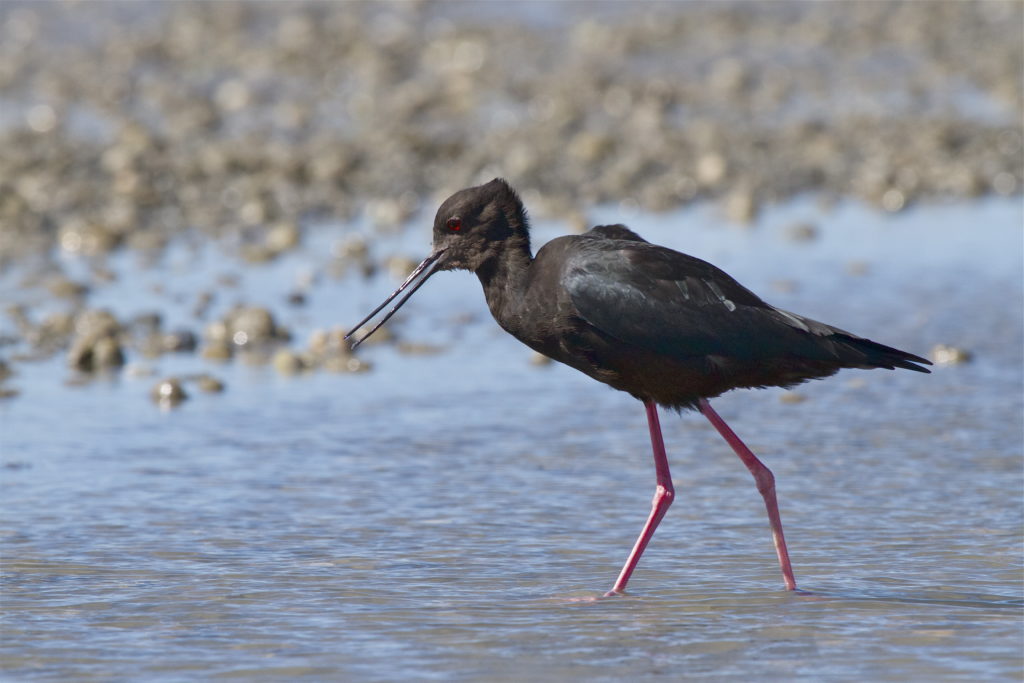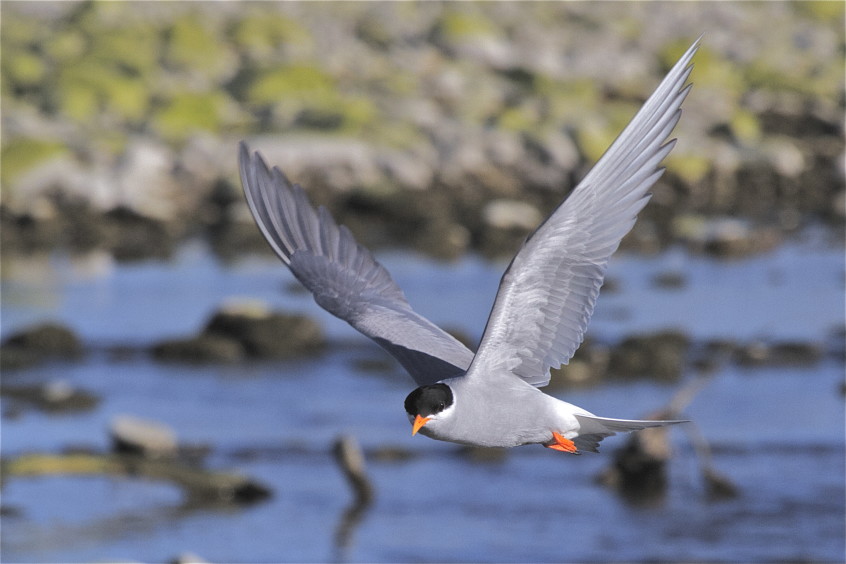Braided river systems are rare throughout the world, but we have some superb examples in New Zealand, particularly in the Canterbury and Southland regions. New Zealand’s braided riverbeds are breeding grounds for some very special wildlife including the wrybill – the only bird in the world with a bent beak – and the very rare black stilt.

So how much do we know about predators in a braided river system, how to monitor them and how they affect bird breeding success?
Research by G.A. Pickerill (University of Otago), C.F.J. O’Donnell (DOC, Christchurch), D.J. Wilson (Landcare Research, Dunedin) and P.J. Seddon (University of Otago) compared nine different detection techniques for mammalian predators at 19 different sites on the Rangitata River – a large braided river system in Mid Canterbury.
According to the researchers, efficient predator detection techniques are essential for monitoring predator populations and assessing the effectiveness of control operations. An efficient detection method is one that can be relied upon to detect a predator if it is present.

There has, however, been little previous research comparing the efficiency of various detection methods. This is particularly the case with predators in non-forest habitats. Predator behaviour may differ in more open environments such as the braided river studied in this project, meaning that the results of research conducted in a forest environment may not be applicable to other situations.
In a braided river system, the dominant predators are feral cats, ferrets, stoats and hedgehogs. The detection methods compared in the project were: three sizes of tracking tunnel, hair tubes, wax tags, two types of kill trap and two search patterns.
These methods varied in their ability to detect the various predator species. The researchers concluded that: “the most efficient detection techniques included large tracking tunnels and hair tubes for feral cats, large tracking tunnels for European hedgehogs and WaxTags® for brushtail possums… Our findings emphasise the merit of using more than one technique to detect a species, and we recommend that detection devices are left open for at least 10 nights.”
Specific recommendations include placing large cat tracking tunnels 400-800m apart and the researchers warn that care is needed when placing these tunnels as they are susceptible to wind in an open environment. Further investigation of detection methods is also recommended, including studies into the use of trail cameras and predator dogs.
The full article can be freely downloaded from the New Zealand Journal of Ecology: How can we detect introduced mammalian predators in non-forest habitats? a comparison of techniques (2014)
Camera traps were part of a study carried out by A.S. Glen, B Warburton, J. Cruz and M. Coleman from Landcare Research, Lincoln. Their research compared the ability of camera traps and kill traps to detect mammalian predators in a field trial carried out at Macraes Flat (North Otago) and Tasman Valley.
Currently capture rates with kill traps are the main method used to measure the success of predator control operations targeting large predators such as stoats, feral cats and hedgehogs. This method is limited in that it does not show how many predators remain in the area after a control operation – it only shows the numbers that are caught. This is particularly an issue if some individuals avoid kill traps. Camera trapping thus has the potential to provide an independent assessment of predator numbers before and after control operations.
In this project, the researchers compared camera traps with kill traps in terms of capture rate per 100 trap nights and found that capture rates of cats and hedgehogs were higher with cameras than with kill traps. Because detections of stoats were low, the comparison between cameras and kill traps for stoats was inconclusive.

Issues with the use of camera traps included large numbers of false triggers that filled the camera’s memory, reduced battery life and made collation of results more time-consuming. While camera traps have potential, the researchers conclude that further research and camera-modifications are needed.
The full article is published in the New Zealand Journal of Zoology and can be freely downloaded: Comparison of camera traps and kill traps for detecting mammalian predators: A field trial (2014)
The Tasman River – a braided river in the Mackenzie Basin – was the location for a comparative study of banded dotterels, wrybills, black stilts and black-fronted terns, carried out by researchers from Landcare Research (Lincoln), University of Auckland and University of Otago. The study compared their responses, at different life stages, to invasive predators and changing river flows, using data collected as a part of Department of Conservation management and monitoring programmes on the river.
Multiple species are often found in the same braided river habitat and are exposed to the same threats, but can respond differently to environmental factors such as river flow. What benefits one species may be detrimental to another. A high river flow may, for example, put nest sites at risk of flooding, but this risk may be counteracted in part by making it more difficult for predators to access nest sites.
Budgetary constraints can mean that only one ‘indicator’ species is monitored, but results from this monitoring can be misleading if the responses of the other species differ. Comparison of these four bird species on the Tasman River did, indeed, show differing responses. The study also showed that predation rates did not necessarily equate to overall predator abundance.
According to the researchers, “results suggest that low minimum and high maximum flows can have opposite effects on dotterels and wrybills, and that dotterels may be subject to a trade-off between predation and flooding risk. Also, localised predation on terns may be due to specialisation by individual predators.”
As a result of their comparative study they recommend that, “managers conserving sympatric Charadriiformes should not assume consistent responses to threatening processes and should use indicator species with caution.”
The full article, published in Biological Conservation, is available for purchase: Species-specific responses by ground-nesting Charadriiformes to invasive predators and river flows in the braided Tasman River of New Zealand (2013)

